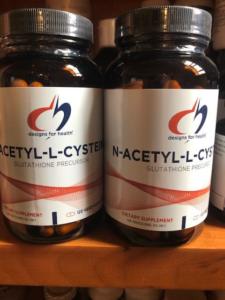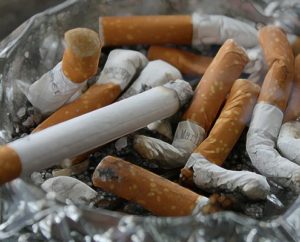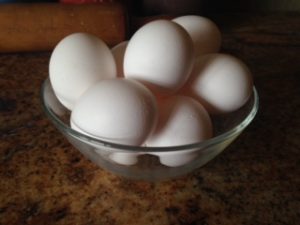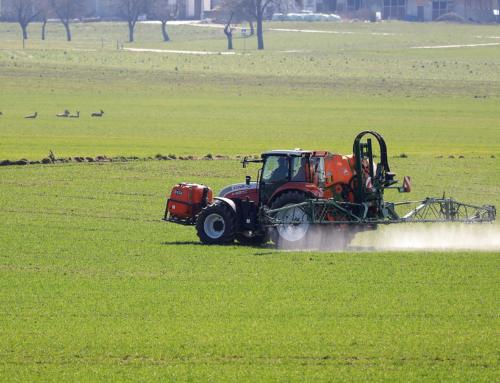N-Acetyl-Cysteine: What you Need to Know Since its Removal from Amazon
Cysteine is a sulfur-rich, water-soluble amino acid required to synthesize glutathione in the liver (Haas & Levin, 2006). L-cysteine is one of three amino acids needed to produce glutathione, your master antioxidant; however, cysteine taken alone is poorly absorbed (Marz, 1999). Since cysteine is a precursor to glutathione, it is vital for detoxification as well. Therefore, when the demand for glutathione increases, such as during oxidative stress, NAC supplementation can support glutathione synthesis. If glutathione is not available, the holdup is usually a lack of cysteine (Haas & Levin, 2006). You can supplement with L-cysteine, but the NAC form is more stable and thus more beneficial (Gaby, 2011).
What Happened to all the NAC?
There has been disagreement over whether NAC is a dietary supplement or a medication. NAC is also found in the prescription form used for acetaminophen overdose and is commonly found in emergency rooms. Naturally, the prescription form will continue and as it should save lives. In 2020 the FDA stated that it could not be sold as a supplement since it has been used in prescription form since 1963 (Dreier, 2021); however, it appears that, in reality, it was not approved for medication use until 2016 (Mercola, 2021a).
This new virus and the new injection both produce spike proteins. Interestingly, Lei et al. (2021) state that treatment for spike proteins was NAC. This is because NAC can make breathing easier. Dr. Mercola (2021b), states that there are currently 16 clinical trials investigating NAC use for this virus. So the timing of the warning letters should not shock anyone since NAC is purported to block the cytokine storm, support lung health, prevent hypercoagulation that can result in stroke or blood clots that can impair lung oxygen exchange (Mercola, 2021b).
According to an article by Long (2021), NAC is currently in FDA limbo. Thus, some companies, such as Amazon removed NAC, due to FDA warning letters. To be clear, a warning letter is not an official FDA action (Long, 2021).
Even though it has been removed from Amazon, you do have options. I suggest that my clients not order any supplements from Amazon due to some concerns, which you can read more about below.
More information on counterfeit products online:
https://www.wired.com/story/amazon-fake-supplements/
https://articles.mercola.com/sites/articles/archive/2020/01/14/amazon-supplement-fraud.aspx
Where to Purchase NAC
I can still get NAC from my online apothecaries; however, we do not know if nutraceutical companies will restock this product. Many brands of NAC are currently out of stock. At this point, it just depends on how manufacturers react to the warning letters. I would encourage you to stock up with a bottle or several for some of the beneficial reasons listed below.
You can also take glutathione. More information on glutathione here: https://trufoodsnutrition.com/glutathione-for-detox-mental-health-and-longevity/
NAC Benefits
- Addictions (this can include drug, alcohol, gambling)
- Influenza (shortens illness duration)
- OCD
- RA
- Cataract prevention
- PCOS
- Alcoholism
- Scleroderma
- Bipolar Disorder
- Anti-inflammatory
- Nebulized for mucus, lung congestion (with medical professional only)
- To decrease homocysteine levels.
- Acetaminophen overdose (via IV by medical professional only)
- COPD, bronchitis, asthma: 1-3 grams daily in divided doses.
- Air pollution exposure
- Can reduce side effects from chemotherapy: 1-3 g per day.
- Psoriasis
- Liver disease associated with alcoholism.
- Hair loss: 1-5 grams per day
- Smokers
- Increases HDL, reduces uptake of oxidized LDL
(Bauman & Friedlander, 2015; Debe, n.d.; Gaby, 2011; Haas & Levin, 2006; Marz, 1999)
In a study with 600 mg twice daily (de flora et al., 1997), NAC improved immune function to the flu and reduced the severity. In de flora et al.’s (1997) study, the number needed to treat was 0.5, meaning that one will be protected against the flu for every two people given NAC. The number for the flu vaccine is 71, meaning that 71 people must be vaccinated to prevent one flu case (Mercola, 2021).
How Much Should You Take?
The average dose for a health condition orally is 600-1,200 mg per day. Some studies have used doses as high as 8,000 mg per day; however, I do not suggest this. It is best to divide the amount three times per day. Most NAC products come in 500-900 mg tablets.
Foods That Contain L-cysteine (NOT NAC form)
- Whey 1 1/3 T. 380 mg.
- Chicken 3.5 ounces roasted 364 mg.
- Egg 1 poached 271 mg.
- Oatmeal 1 c. cooked 227 mg.
- Ricotta cheese ½ cup full fat 123 mg.
- Yogurt 1 c. full-fat plain 78 mg.
- Pork 3 ounces 120 mg.
- Turkey 3 ounces 94 mg.
- Whole milk, 1 cup, 33 mg.
- Sulfur rich foods such as garlic, onion, Brussel sprouts, egg yolks, and broccoli
(Bauman & Friedlander, 2015; Haas & Levin, 2006; Marz, 1999)
As far as I know, garlic is the only food that contains NAC (Dewi et al., 2017).
Garlic, in my opinion, is a superfood due to its CVD benefits, its antimicrobial properties, and since it contains NAC.
Contraindications
NAC appears to be very safe; however, Gaby (2011) states to avoid NAC if you have a peptic ulcer.
Bottom Line
Stock up on NAC if you can. Continue to consume whole food sources of cysteine. Take glutathione in acetyl or liposomal form, depending on your needs. If you take milk thistle for liver support, this too will boost your glutathione levels due to the silymarin content (Kiruthiga et al., 2010; Soto et al., 2010).
Want more helpful nutrition information, tips, and recipes that you won’t find elsewhere? Sign up for my substack.
https://trufoods.substack.com
References
Bauman, E. & Friedlander, J. (2014). Foundations in nutrition. Bauman College
Dewi, A. D. R., Kusnadi, J., & Shih, W.-L. (2017). Comparison of the Main Bioactive Compounds and Antioxidant Activity from Garlic Water-soluble and Garlic Oil. KnE Life Sciences, 3(5), 20-34. https://doi.org/10.18502/kls.v3i5.975
Gaby, A. (2011). Part 2D: Other therapeutic agents. In Nutritional medicine. (pp. 199-200). Fritz Perlberg Publishing.
Haas, E. & Levin, B. (2006). Chapter 3: Proteins. In Staying healthy with nutrition. The complete guide to diet and nutritional medicine. (pp. 49-50). Celestial Arts.
Kiruthiga, P. V., Pandian, S. K., & Devi, K. P. (2010). Silymarin protects PBMC against B(a)P induced toxicity by replenishing redox status and modulating glutathione metabolizing enzymes–an in vitro study. Toxicology and applied pharmacology, 247(2), 116–128. https://doi.org/10.1016/j.taap.2010.06.004
Lei, Y., Y. L., Zhang, J., J. Z., Schiavon, C. R., Chen, L., Shen, H., Zhang, Y., Cho, Y., Andrade, L., … Al., E. (2021, March 31). SARS-CoV-2 Spike Protein Impairs Endothelial Function via Downregulation of ACE 2. Circulation Research. https://www.ahajournals.org/doi/10.1161/CIRCRESAHA.121.318902.
Long, J. (2021, May 17). Stakeholders can’t sue FDA over NAC warning letters. https://www.naturalproductsinsider.com/regulatory/stakeholders-cant-sue-fda-over-nac-warning-letters
Marz, R. (1999). Cysteine/glutathione. In Medical nutrition. ( 2nd ed.). Omni-Press
Dreier, S. (2021, May 27). The real reason NAC supplement got banned. https://sorendreier.com/the-real-reason-nac-supplement-got-banned/
Debe, J. (n.d.). NAC is being studied in covid-19. Should you take it? https://www.drdebe.com/blog/2020/4/2/0txsap858db2lx8l6b21fultjorb4x
Mercola, J. (2021a, May 16). NAC banned from Amazon, FDA says its medication. https://articles.mercola.com/sites/articles/archive/2021/05/15/nac-banned.aspx
Mercola, J. (2021b, June 17). NAC banned on Amazon, threatened by FDA. https://articles.mercola.com/sites/articles/archive/2021/06/17/nac-banned-on-amazon.aspx
Mercola, J. (2020, Sep. 3). FDA wants to ban NAC now that it combats covid-19. https://articles.mercola.com/sites/articles/archive/2020/09/03/n-acetylcysteine-fda.aspx
Soto, C., Pérez, J., García, V., Uría, E., Vadillo, M., & Raya, L. (2010). Effect of silymarin on kidneys of rats suffering from alloxan-induced diabetes mellitus. Phytomedicine: international journal of phytotherapy and phytopharmacology, 17(14), 1090–1094. https://doi.org/10.1016/j.phymed.2010.04.011




